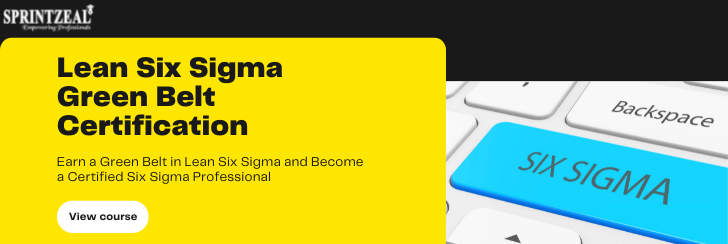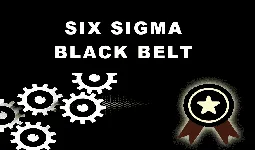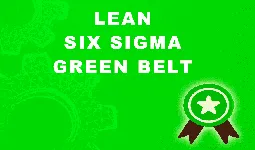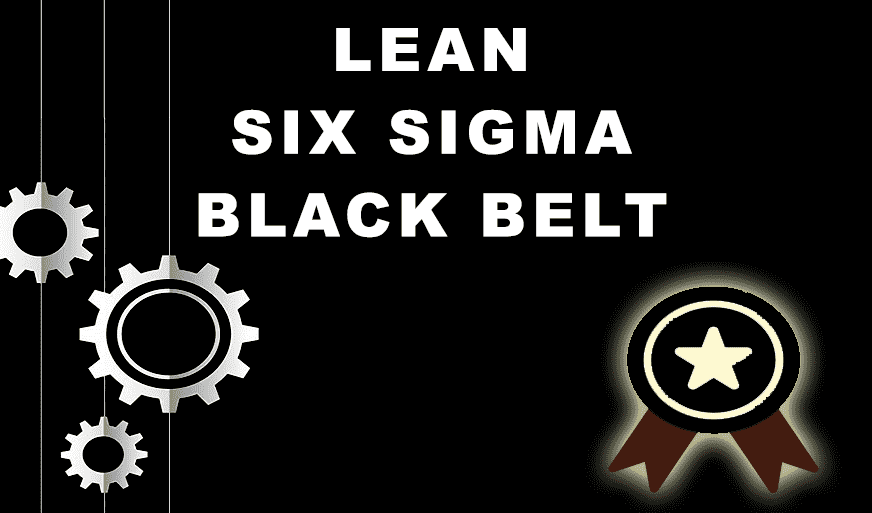Lean Waste Management: The Ultimate Guide 2023
-
 By Nchumbeni Yanthan
By Nchumbeni Yanthan - Published on Dec 13 2023
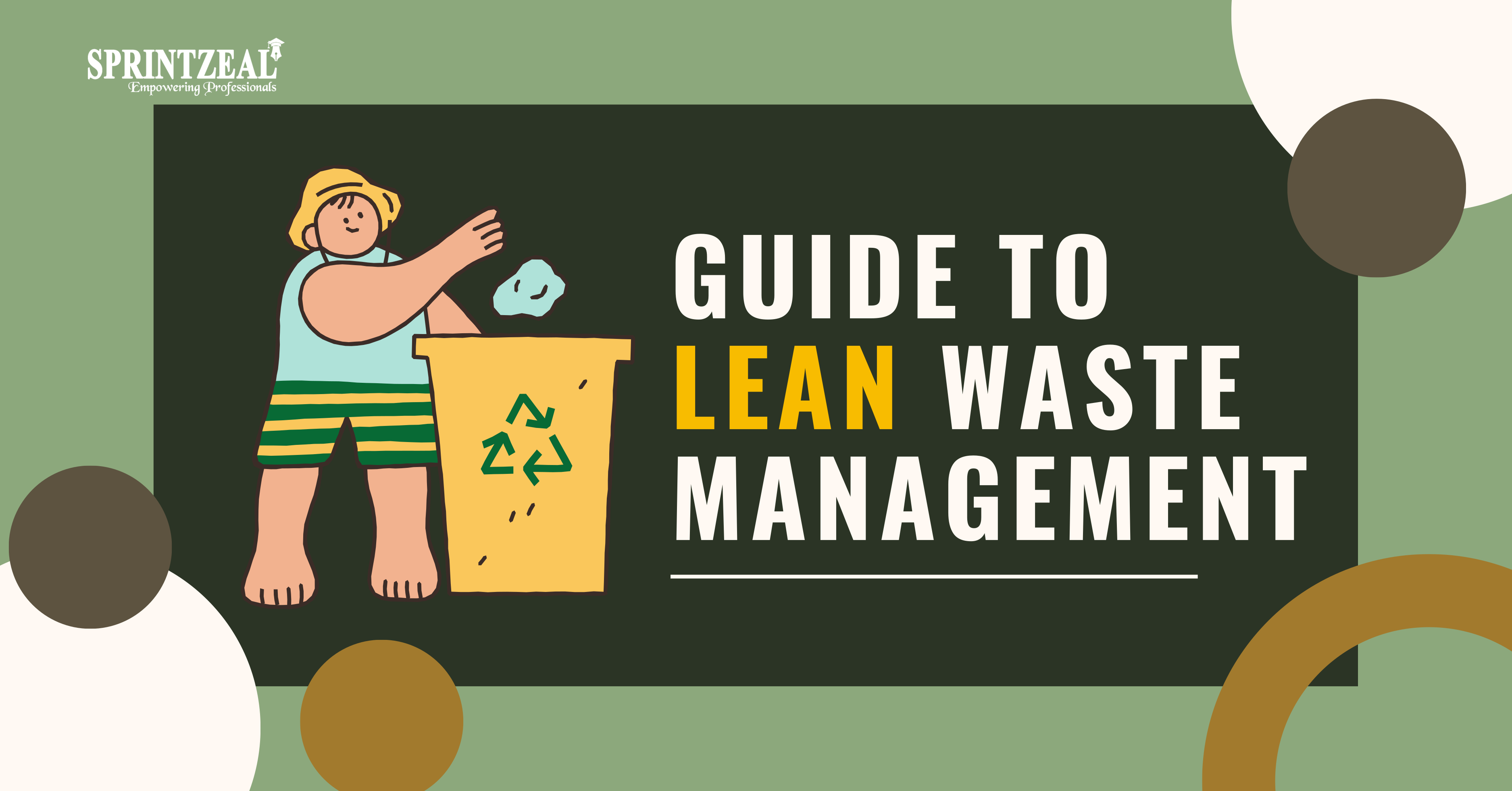
Table of Contents
- Introduction to Lean Waste Management
- Foundations of Lean Management
- Understanding the 8 Waste Types of Lean Manufacturing
- How to Recognize and Eliminate Lean's 8 Wastes?
- Tools to Identify the 8 Types of Waste
- Implementation of Lean Practices
- Strategies for Lean Waste Reduction
- Enhancing Lean Management Skills with Sprintzeal
- Conclusion
- Frequently Asked Questions
Introduction to Lean Waste Management
In the fast-paced world of business, Lean Management is key to sustained success by optimizing efficiency. One integral aspect of operational efficiency is the implementation of Lean Waste Management practices.
This guide aims to break down the complexities of Lean principles into digestible components, providing a comprehensive understanding of how to identify, mitigate, and eliminate the eight wastes that commonly plague organizational processes.
Foundations of Lean Management
Before getting into the specifics of Lean Waste Management, it is crucial to establish a foundational understanding of Lean Management itself. Originally stemming from Toyota's Production System, Lean Management is a systematic approach to minimize waste while maximizing productivity. At its core, Lean is about creating more value for customers with fewer resources.
The fundamental principles of Lean Management include continuous improvement, respect for people, and the elimination of waste. These principles serve as the guiding philosophy for Lean Waste Management, ensuring that the focus remains on delivering value and reducing inefficiencies.
By incorporating lean methodology, businesses can foster a culture of continuous improvement and adaptability, driving sustained success in today's dynamic market.
Understanding the 8 Waste Types of Lean Manufacturing
Locating and removing wastes is critical to achieving operational excellence in the sense of Lean Manufacturing. The lean management 8 wastes, often referred to as Muda, represent inefficiencies that impede the flow of value in a process. A brief exploration of different types of lean management waste sheds light on their impact and the importance of addressing them:

Lean Waste 1: Defects
Defects encompass errors and flaws in products or processes of lean waste management. These defects result in rework, increased costs, and customer dissatisfaction. The impact is not merely monetary but extends to the reputation and trust that customers place in the organization
Lean Waste 2: Overproduction
Overproduction occurs when more goods are produced than required. This waste ties up resources, increases storage costs, and can lead to obsolescence. Addressing overproduction is vital for maintaining a lean, demand-driven production system.
Lean Waste 3: Waiting
Waiting waste is the idle time between process steps. This seemingly passive waste has an active impact on overall productivity, causing delays, bottlenecking, and reduced employee morale. Minimizing waiting times enhances process efficiency.
Lean Waste 4: Non-Utilized Talent
Non-utilized talent refers to the underutilization of skills and expertise within the workforce. This waste not only impacts individual job satisfaction but hampers organizational innovation and agility. Recognizing and leveraging employee potential is crucial for overall success.
Lean Waste 5: Transportation
Transportation waste involves unnecessary movement of goods or materials. Excessive transportation not only incurs additional costs but also poses risks such as damage and delays. Streamlining transportation processes is essential for minimizing this type of waste.
Lean Waste 6: Inventory
Inventory waste ties up capital and storage space. Beyond the financial implications, excess inventory can lead to waste through obsolescence and increased handling requirements. Implementing just-in-time principles helps maintain optimal stock levels.
Lean Waste 7: Motion
Motion waste relates to the unnecessary movement of people or equipment during a process. This waste not only increases the risk of workplace injuries but also impacts efficiency. Implementing ergonomic practices minimizes motion waste and contributes to a safer working environment.
Lean Waste 8: Extra-Processing
Extra-processing in lean waste management involves any effort that does not add value to the final product. This waste is often the result of unnecessary steps or over-engineering. Identifying and eliminating non-value-added processes is crucial for streamlining operations and reducing costs.
How to Recognize and Eliminate Lean's 8 Wastes?
Identifying and eliminating the eight wastes in Lean manufacturing is crucial for optimizing processes and fostering efficiency. Here's a concise guide:
Conduct Value Stream Mapping: Visualize the entire process of lean waste management to identify areas of waste and streamline value delivery.
Implement 5S Methodology: Organize the workspace to reduce defects, waiting times, and unnecessary motion.
Utilize Kanban Systems: Enhance visibility and control of workflow to minimize overproduction and excess inventory.
Introduce Andon Systems: Implement visual signals to promptly address issues and reduce defects and waiting times.
Adopt Just-In-Time (JIT) Principles: Minimize inventory waste by producing goods in response to customer demand.
Promote Continuous Improvement: Foster a culture where employees actively seek and eliminate waste, ensuring ongoing efficiency gains.
Tools to Identify the 8 Types of Waste
Efficient waste identification is crucial for Lean initiatives. Several tools streamline this process of lean waste management:
- Value Stream Mapping: Offers a visual overview of processes, highlighting waste-prone areas for targeted improvement.
- 5S Methodology: Promotes workplace organization through Sort, Set in order, Shine, Standardize, and Sustain, enhancing waste visibility.
- Kanban Systems: Facilitates just-in-time production by visually signaling when materials are needed, reducing overproduction and inventory waste.
- Andon Systems: Provides real-time alerts for abnormalities in the production process, enabling swift response to defects and minimizing downtime.
These tools empower organizations to identify and address the eight wastes systematically. Value Stream Mapping pinpoints inefficiencies, 5S ensures a clutter-free environment, Kanban enables demand-driven production, and Andon enhances real-time responsiveness.
Integrating these tools into lean practices not only enhances waste management but also fosters a culture of continuous improvement and efficiency. It provides organizations with the precision needed to navigate the path toward lean management waste types, waste reduction, and operational excellence.
Implementation of Lean Practices
A thorough reworking of organizational procedures is necessary to implement lean principles. Firstly, conduct a thorough analysis of lean waste management to identify areas of waste and inefficiency. Engage employees at all levels, fostering a sense of ownership and commitment to Lean principles.

This collaborative approach ensures diverse perspectives contribute to waste reduction efforts. Successful implementations often involve the integration of Lean tools such as Value Stream Mapping, 5S Methodology, Kanban, and Andon systems.
Case studies of effective Lean implementations provide valuable insights, offering practical solutions to challenges. Continuous monitoring and adjustment of KPIs drive ongoing process improvement in organizations.
Strategies for Lean Waste Reduction
Strategies for Lean waste reduction involve a targeted and systematic approach to enhance operational efficiency.
Prioritizing waste reduction efforts is critical, focusing on areas with the most significant impact on overall productivity. Integration of technology, such as automation and data analytics, plays a pivotal role in enhancing accuracy and speed in processes, contributing to waste reduction.
Creating a Lean culture within the organization is equally important, where continuous improvement is ingrained in daily operations. This involves fostering employee engagement, encouraging innovative problem-solving, and promoting a collective commitment to waste elimination.
By aligning Lean principles with organizational goals, businesses can effectively reduce waste, streamline processes, and achieve sustainable improvements in both cost savings and overall performance.
Enhancing Lean Management Skills with Sprintzeal
Elevating your proficiency in Lean Management involves strategic steps to advance your professional journey:
Certification Impact: Pursue globally recognized Lean Six Sigma certifications to validate your skills. Sprintzeal provides comprehensive Lean Six Sigma Certification training, enhancing your credentials and showcasing your expertise in Lean practices.
Career Opportunities: Leverage your certifications, especially Lean Six Sigma on your resume to attract diverse career opportunities. Make yourself a standout candidate in the competitive landscape of Lean Management roles.
Leadership Roles: Certified Lean Management professionals are often sought for leadership positions, enabling you to take on strategic roles within your organization and contribute to its success.
Effective Decision-Making: Develop Lean Management skills for impactful decision-making, positively influencing project outcomes and aligning with overall business objectives.
Continuous Improvement: Stay ahead of industry trends by committing to continuous learning and professional development in Lean Management, ensuring your skills remain relevant and adaptable to evolving organizational needs.
Conclusion
Lean Waste Management optimizes organizational processes by understanding and addressing the eight wastes systematically. By reducing waste, organizations enhance efficiency, reduce costs, and deliver greater value to customers. Integrating Lean principles into the organizational culture ensures waste reduction becomes an ongoing, sustainable effort, positioning the company for long-term success.
To further amplify your impact, consider aligning Lean Management skills with broader project management methodologies. Sprintzeal's comprehensive training programs in PMP Course and Certified Scrum Master offer an excellent opportunity to broaden your skill set. Incorporating Lean principles into these methodologies not only fortifies your understanding but also equips you with a versatile toolkit for successfully navigating complex projects.
In conclusion, our comprehensive courses suit all skill levels. Contact our course expert for queries, and subscribe to receive valuable updates directly to your inbox, saving you time and keeping you informed.
Frequently Asked Questions
What is Lean Waste Management?
Lean Waste Management is a systematic approach to identifying and eliminating inefficiencies in a business process, improving overall productivity and quality.
What are the 8 wastes of Lean management?
The 8 wastes of Lean management include Defects, Overproduction, Waiting, Non-Utilized Talent, Transportation, Inventory, Motion, and Extra-Processing.
What are the 7 types of waste in lean?
The 7 types of waste in lean management, or Muda, include Overproduction, Waiting, Transportation, Inventory, Motion, Extra-Processing, and Defects. Non-Utilized Talent is sometimes considered the 8th waste.
What are the 7 types of Muda?
The 7 types of Muda, or waste, in lean waste management are Overproduction, Waiting, Transportation, Inventory, Motion, Extra-Processing, and Defects. Non-Utilized Talent is often included as an additional type of waste.
Subscribe to our Newsletters
Popular Programs
Trending Posts
10 Quality Management Strategies Adopted by Top Managers
Last updated on Apr 11 2025
Operational Planning Creation, Key Elements and its Benefits
Last updated on Feb 21 2025
Quality Assurance vs Quality Control
Last updated on Aug 2 2023
Top 10 Lean Manufacturing Tools for Optimal Productivity
Last updated on Jan 15 2024
The Ultimate Guide to ISO 9001: Boosting Quality and Certification Success
Last updated on Jul 24 2024
Understanding the Key Principles of Lean Manufacturing
Last updated on Nov 22 2023
Categories
- Agile Management 54
- AI and Machine Learning 42
- Big Data 53
- Business Management 51
- Cloud Computing 44
- Digital Marketing 56
- Information Security 8
- IT Hardware and Networking 17
- IT Security 103
- IT Service Management 29
- Leadership and Management 1
- Microsoft Program 2
- Other 43
- Programming Language 31
- Project Management 162
- Quality Management 75
- Risk Management 8
- Workplace Skill Building 2
Trending Now
Top Career benefits of Lean Six Sigma Green Belt
ArticleLean methodology, Six Sigma methodology and Lean Six Sigma Explained
ArticleSix Sigma Black Belt Certification – Value and Career Benefits in 2024
ArticlePareto Chart in Six Sigma - Explained
ArticleQuality Management Interview Questions 2024
ArticleSix Sigma Certification Guide - A Professional's Guide
ArticleSix Sigma Yellow Belt Certification - Six Sigma for Beginners
ArticleQuality Control Explained – Six Sigma
ArticleTotal Quality Management - A Complete Guide for Beginners
ArticleQuality Assurance in Six Sigma Explained
ArticleQuality Assurance vs Quality Control
ArticleSix Sigma Certification – Everything you Need to Know About Getting Certified
ArticleLean Six Sigma on Resume for Rewarding Career Benefits
ArticleQuality Manager Interview Questions and Answers for 2025
ebookService Delivery Manager Interview Questions and Answers (With Examples)
ArticleSix Sigma Interview Questions and Answers 2024
ArticleHow to become a Quality Analyst
ArticleA Supply Chain Management Guide to Mastering Logistics End to End
ArticleSenior Quality Manager Interview Questions and Answers 2024
ArticleTop 30 Quality Analyst Interview Questions and Answers 2025
ArticleFinancial Analyst Interview Questions and Answers 2024
ArticleRisk Manager Interview Questions and Answers 2024
ArticleCompliance Manager Interview Questions and Answers 2024
ArticleOperation Manager Interview Questions and Answers
Article5 Lean Continuous Improvement Principles to Supercharge Your Operations
ArticleHow to Become a Quality Manager - Career, Job Scope and Certifications
ArticleEssential Components of a Quality Management System
ArticleSix Sigma Certifications - Reasons Why you Should Get Them
ArticleTop Qualities of a Good Manager and a Leader
ArticleLearn about Statistical Process Control (SPC) and its top applications
ArticleCost of Poor Quality - A Detailed Guide
ArticleImplementing 5S Methodology for Better Work Efficiency
ArticleWhat Is Lean Management?
ArticleBest Six Sigma Books in 2024
ArticleLeadership vs Management - The Ultimate Guide
ArticleQuality Assurance Plan - Six Steps To Quality Assurance Plan
ArticleOperational Planning Creation, Key Elements and its Benefits
ArticleA Complete Guide to Product Life Cycle Stages 2025
ArticleSix Sigma tools for DMAIC Phases
ArticleWhat Is Lean Manufacturing?- An Overview
ArticleThe Lean Continuous Improvement Model: A Comprehensive Guide
ArticleDMAIC vs. DMADV: Key Differences and Choosing the Right Six Sigma Methodology
ArticleA Deep Dive into the Power of Lean Continuous Improvement Process
ArticleLean Continuous Improvement Methods for Business Excellence
ArticleIntroduction to Lean Manufacturing- Definitions, Framework, and More
ArticleUnderstanding the Key Principles of Lean Manufacturing
ArticleSecret to Unlock Organizational Excellence: Stages of Continuous Improvement
ArticleLean Continuous Improvement: A Detailed Guide to Mastering Organizational Quality
ArticleA Deep Dive into Lean Continuous Improvement Tools
Article8 Wastes of Lean - Strategies for Identification and Elimination
ArticleThe Ultimate Guide to Lean Manufacturing
ArticleUnderstanding Lean Manufacturing's Pros and Cons
ArticleLean Waste Reduction Strategies: Boost Efficiency and Cut Costs
ArticleTop 10 Lean Manufacturing Tools for Optimal Productivity
ArticleBeyond the Basics: Benefits of Lean Continuous Improvement
ArticleWhat are Quality Standards? | A Guide to ISO Standards
Article7 Important Types of Quality Management System
ArticleA Comprehensive Guide to Quality Management Systems
ArticleISO 9001 Standard: Benefits and Certification
ArticleBenefits of QMS Certification for Your Business
ArticleStep-by-Step Implementation Guide to ISO 9001
ArticleThe Ultimate Guide to ISO 9001: Boosting Quality and Certification Success
ArticleQuality Management System – QSM Approaches and Methodologies
ArticleHow to Effectively Implement a Robust Quality Management System?
ArticleExplaining QMS Documentation Structure: Benefits and Best Practices
ArticleWho Needs ISO 9001 Certification and Why?
ArticleKey Elements of ISO 9001:2015 Quality Management System
ArticleOvercoming Common Challenges in ISO 9001 Certification: Tips and Best Practices
ArticleBest Quality Management Tools
ArticleTotal Quality Management (TQM) vs. Six Sigma
ArticleQuality Manager Salary: What Freshers & Experts Earn in 2025
ArticleCertified Scrum Product Owner: Job Roles And Responsibilities
ArticleTips for Continuous Integration Testing: Streamlining QA
Article10 Quality Management Strategies Adopted by Top Managers
Article